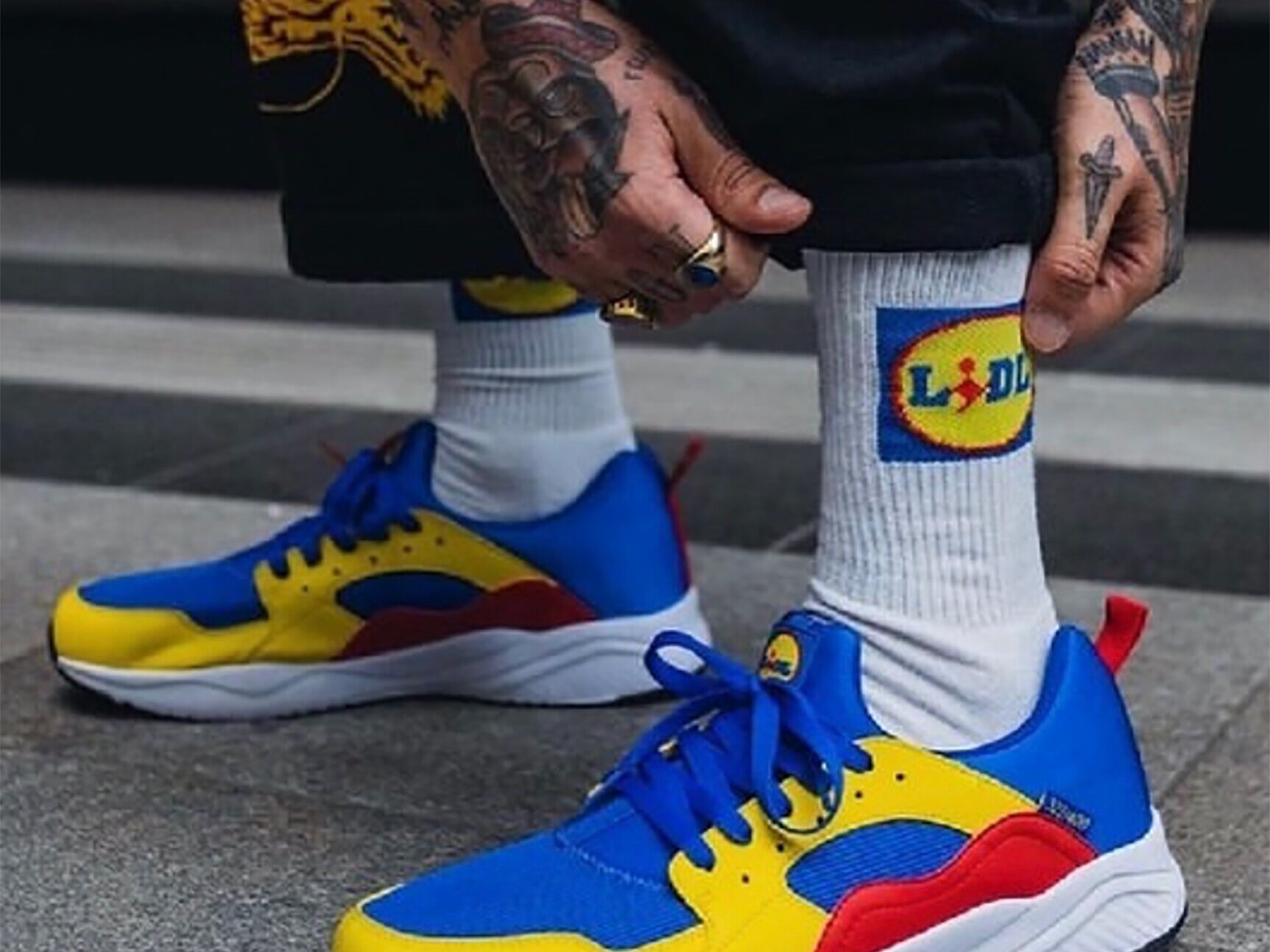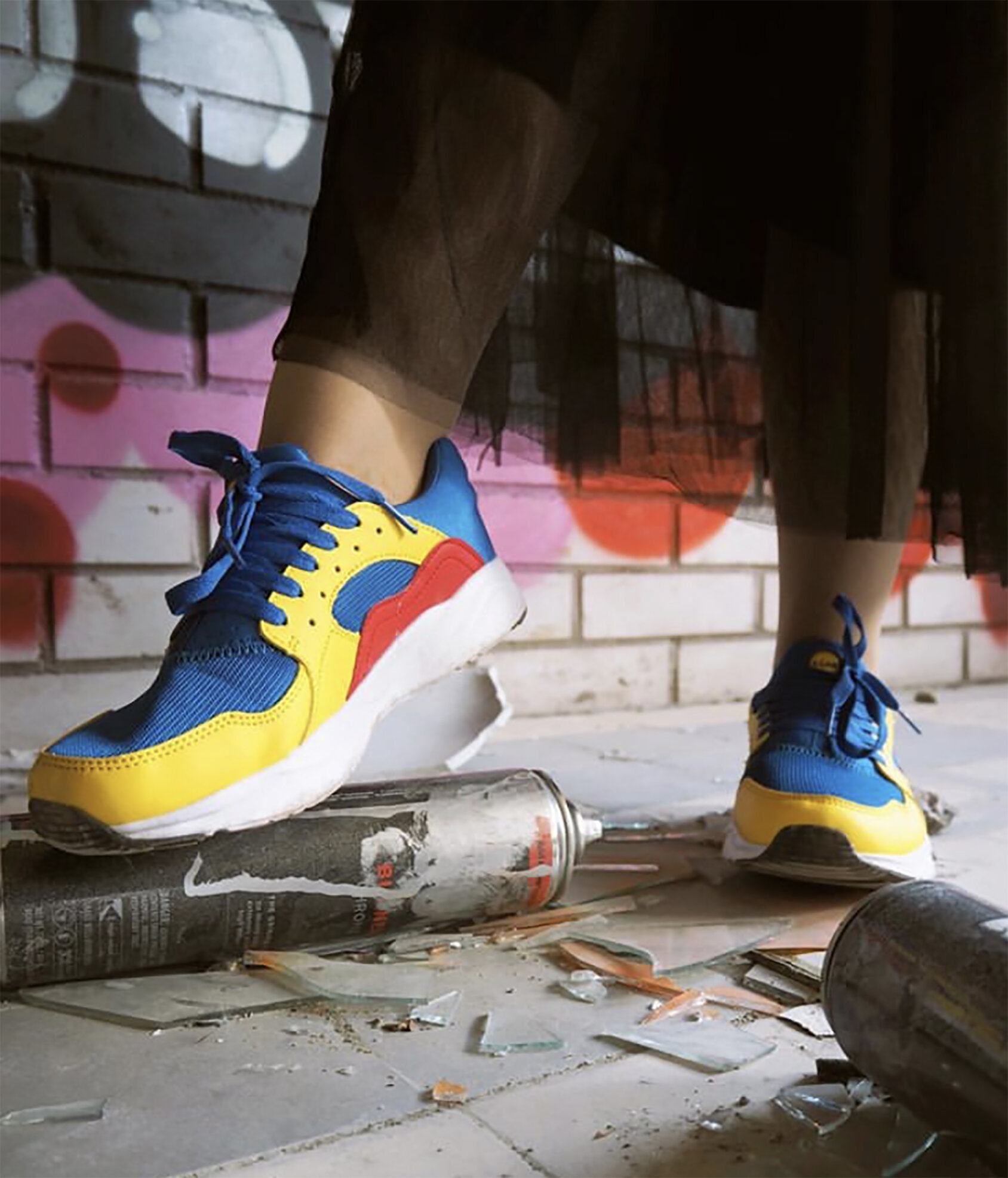Why Scarcity Works: The Tale of the £450 Lidl Shoes
In today’s edition of Who Is Buying This Rubbish, we travel to Finland where shoppers are queued outside of Lidl waiting to fight tooth and nail to get their hands on the latest trainers. Is everybody’s favourite discount grocery store selling Air Jordans now? Slashing prices on Louboutins? Nope. They’re offering their own store brand kicks and all of Europe wants them.
It’s easy to see why the German grocer thought we’d love a pair of centre aisle shoes. We’ve been mad for their weird knockoffs for years. We are happy to swap our Weetabix for Lidl Bixies and dip our hands into a bag of pickled onion Lidl Monster Claws rather spend a few extra great british pennies for Walkers. If it tastes the same, why not grab a store brand and save some cash?
The bizarre thing about these Lidl trainers is that they aren’t cheap. Well, they were cheap until we completely lost our minds and started driving up the price. But what exactly happened to increase the Lidl price from £14 to £450?
From a Design Perspective
Okay, so we’ve got a pair of trainers with primary colour blocking. They’ve got a bright and fun retro 90s vibe. Would I have bought them for £14? Maybe after enough of that famous £3 a bottle Lidl wine. You could see them as a bit similar to those vintage Reebok throwbacks... Except they have a massive Lidl Logo smack bang in the middle. In fact, they are even the brand colours for Lidl. So, is Lidl just that hot new brand now? What’s going on?
Lidl Trainers + IKEA Shopping Tote? £2155, Please
Remember a couple of years ago when those huge blue IKEA bags were the hottest ticket in town? The 40p bags were all of the sudden sold by luxury French brand Balenciaga with a price tag of a staggering £1,705.
Undoubled, the glazed leather of the Balenciaga bag is sleeker. Rumour has it that they aren’t quite as noisy either, but what are we really getting for that extra £1704.60? The simple pleasure of knowing that we’ve got something no one else has, of course. While we’ve all got a few IKEA FRAKTA bags jammed at the back of the wardrobe, every Balenciaga bag is a limited edition.
Loving What You Can’t Have
Lidl is an unexpected source of sneakerhead obsession (yeah, being a “sneakerhead” is a thing, in case you missed the Netflix documentary) but their model is timeless. Scarcity is a huge deal in the world of collecting trainers and fashion in general.
When Kanye West teamed up with Nike and Adidas to start selling shoes, he relied heavily on the old “less is more” model and made sure that there were very few shoes to go around. That’s why a pair of Nike Air Yeezy 2 SP ‘Red October’ has sold for more than £9,000 while a pair of A Bathing Ape Bapesta Kanye West College Dropout trainers went for a cool £15,889.80.
But, then again, that’s no surprise. When Kayne went for a cheeky Nando’s after the Brit Awards, his greasy napkin and single leftover chip went for £8,000. Meanwhile, you can get a large order of PERi-Salted Chips with unlimited napkins for £4.25. Those are not, however, limited edition chips that Kayne’s greasy fingers brushed across.
Why the Scarcity Model Works
FOMO or fear of missing out isn’t just an obnoxious hashtag. From Aristotle who said “what comes only at long intervals has the value of rarity” to the clever Nando’s lover who stole Kanye’s chip, it’s a timeless principle.
And it’s not just about the overpriced products that we buy. Scarcity is a concept that permeates absolutely every aspect of our lives. A study on how we select our partners found that women are far more interested in a married man than a single man. Looking at a pic of the same man, 59% of women said they were interested in him. And when he flashed that ring? Suddenly 90% of the women wanted his number.
A married man, like a pair of Lidl trainers, offers that magical blend of being unavailable yet clearly desired… by many.
Making Scarcity Work for Your Brand
Whether it’s opening a pop-up or offering a limited edition product, creating a scarcity that feels authentic is essential. You don’t want to copy the marketing strategy of that rundown shop in town that has been having a “going out of business” sale every day for the past five years. To actually make it work, you’ve got to show (online and off) that you’re offering something truly special.
Photography: @minnavuorinen


